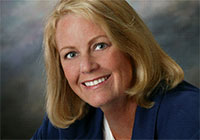It's time to start implementation by creating your Form CRS, scheduling your initial Form CRS distribution, creating your audit report strategy, and simplifying the complex distribution of all future Form CRS and layered disclosures with automation.
Below are highlights from nearly 100 industry players that Broadridge has spoken to on their journey to implement the Form CRS requirement of Reg BI. We also suggest five immediate areas of focus to keep your implementation on track.
Creating Your Form CRS
Broadridge clients and industry players are well along in crafting their Form CRS with Legal and Compliance teams taking the lead in creating the form. Many have held focus groups with broker-dealers, registered representatives and investors to gain feedback on format, discover answers to prescribed questions, and capture questions that the form is prompting, as well as how to best provide more in-depth information on their approach to serving clients. The addition of links and QR codes are becoming the norm in Form CRS. The required length of Form CRS is driving firms to use links to post additional in-depth information and disclosures online. As a result, time is being dedicated to creating new website pages with extended disclosures and deeper discussions of how firms deliver value to their investor clients. Firm expectations are to have one Form CRS that can be composed, versioned, tracked and archived as required under the rule. For more information, visit the SEC's Form CRS FAQ.
Scheduling Your Initial Form CRS Distribution
Industry players are taking different approaches to delivery of Form CRS. The majority are leaning to a one-time initial distribution using existing channels, followed by distribution with layered disclosures at specific points identified in the rule (e.g., when a recommendation is made). For the first distribution, e-delivery or a print mailing as part of the Q2 quarterly statement is the clear winner. Several large institutions are sending a “pre-mailing letter” to inform clients that Form CRS is coming and what the form is about, as well as providing insight on Reg BI.
Creating an Audit Report Strategy
Beginning July 2020, FINRA audits will include looking at the form itself, as well as confirming that Form CRS was sent in a timely fashion and that tracking is in place of who received what version of Form CRS via which delivery method. A majority of firms are looking to use a central repository to store versions and updates to their Form CRS and layered disclosures, enabling them to track what Form CRS version was sent to which investor/household/account, by which method, when it was sent, and by whom.
Day Two: After the Initial Distribution
With the initial distribution complete, it’s time to focus on all additional Form CRS and disclosure distributions required by Reg BI. Overwhelmingly, firms are using technology to smooth the complexity of these distributions with automation. At this time, most industry players have identified the actions triggering the distribution of Form CRS and layered disclosures. They have looked at the business processes, technology available and mapped what other documents are sent to investors at that time (e.g., Form ADV, welcome kit, rollover form, automated rebalancing form). Several players are looking to leverage existing technology and intend to add Form CRS and additional disclosures to the document packages already being delivered to investors. Additionally, broker-dealers and registered reps are attesting in the system that the form was discussed and delivered in a timely fashion.
Other firms have chosen to have all regulatory documents, including Form CRS and layered disclosures, sent from a central system. These firms are using APIs to notify the central system to send the regulatory document. Firms using a central distribution system have the benefit of keeping Form CRS and disclosure document versions in the same place as the distribution information. Reports generated from the central system cover all documents across all channels (e.g., text, mobile, email, print, person to person).
Firms continue to push for digital delivery over paper. For prospects, email is the preferred method; however, several firms are enabling registered reps and broker-dealers to send Form CRS to prospects via text.
5 Immediate Areas of Focus to Keep Your Implementation on Track
With the June 30, 2020 deadline approaching, we suggest some immediate areas of focus to help keep your implementation on track.
- Complete your Form CRS and get broker-dealer/registered rep and investor feedback.
- Broadridge can assist with the form design, language and methods. Broadridge technology can help you build your form and layering disclosures, as well as ensure that they are versioned, tracked, archived and filed under the rule.
- Contact Broadridge and schedule your initial Form CRS distribution.
- If you are not already a Broadridge client, we can still execute this critical distribution for you on a one-time rush basis.
- If you are a current Broadridge client, contact your account manager to discuss and schedule your initial distribution needs. And, yes, Broadridge has the capability to place Form CRS as the top page of your quarterly statement package.
- Enable Form CRS and disclosure tracking, distribution tracking and audit reporting.
- Broadridge Smart Distribution Hub – the centerpiece of our Broadridge Smart Solutions for Reg BI platform – enables version tracking of Form CRS disclosures and their distribution.
- Smooth complexity by automating distribution at critical trigger points (e.g., time of recommendation, account rebalancing, 401k rollover, etc.)
- Broadridge Smart Distribution Hub enables the distribution of Form CRS and disclosures anytime, anywhere through your chosen channel. The Hub is mobile enabled and integrates with CRM and other systems, enabling broker-dealers and registered reps to handle prospects in any situation. Use your business rules in existing systems (e.g., CRM, App, Financial Planning, Portfolio Report) to trigger the Smart Distribution Hub APIs, and automatically and seamlessly distribute your selected documents.
- Create new website pages and determine where links in Form CRS will connect to on your website.
- Broadridge Advisor Solutions has sample templates that you can leverage.
Count on Broadridge for Your Way Forward
Broadridge has been actively engaged at industry events and meetings with nearly 100 firms to understand Reg BI concerns and operational challenges. While business needs vary, the end game is the same: ensure “best interest” obligations are fulfilled with minimal disruption, confusion and cost.
Broadridge has an end-to-end, modular technology solution to meet your Form CRS needs. We’d be happy to give you a demo. Broadridge Consulting has a track record of insight and execution; we can partner with you to make your implementation successful. We look forward to speaking with you.



